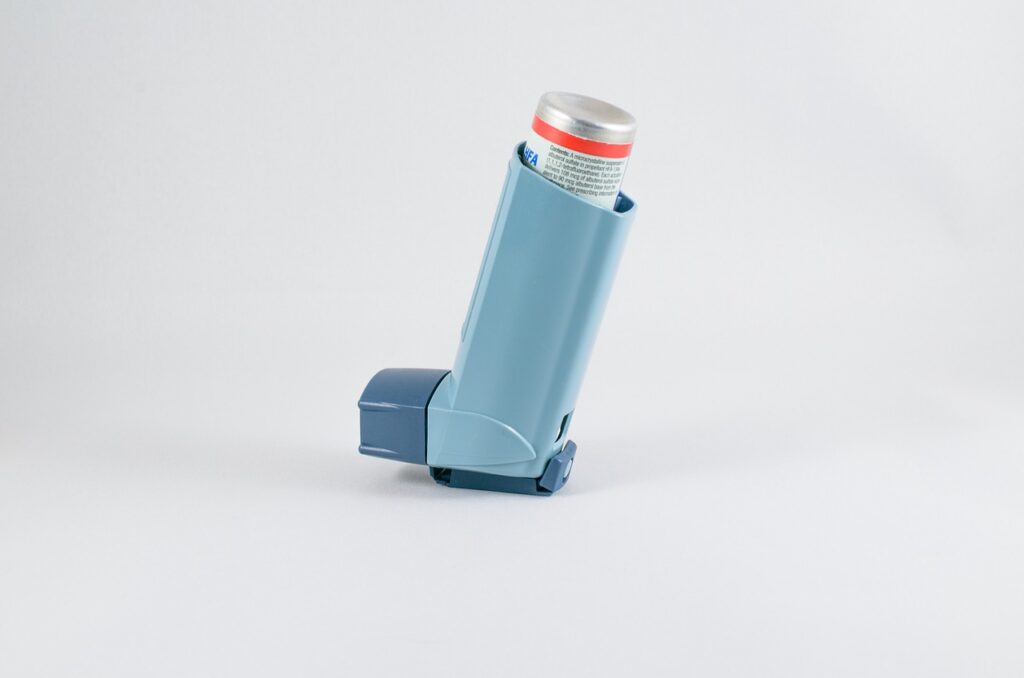Environmental Issues in Managing Asthma

Written By Gregory B Diette, MD, Meredith C McCormack, MD, Nadia N Hansel, MD, Patrick N Breysse, PhD, and Elizabeth C Matsui, MD
Asthma is a common, complex respiratory disease that is characterized by recurrent symptoms of wheeze, cough, chest tightness, and dyspnea. There is growing evidence of environmental causes of the disease, and substantial evidence of the role of the environment, especially inhaled agents such as allergens, pollutants, and viruses, in provoking asthma attacks.
Asthma is best thought of as an immunologically mediated disease, in which an abnormal immune response to inhaled agents provokes a cascade of events that lead to mucus hypersecretion, airways constriction and hyperresponsiveness, and, ultimately, symptoms. Because so much evidence points to environmental factors as triggers of the exuberant immune response, there has been much attention to identifying specific environmental factors that are most responsible for provoking asthma and developing strategies to minimize relevant exposures.
Indeed, avoidance of environmental factors that provoke asthma, where feasible, is a logical way to improve asthma-related health and to minimize the need for long-term use of asthma medications. In this paper we will summarize available evidence on the current practices for managing environmental issues with patients who have asthma. In addition, given the recent release of the latest version of the National Asthma Education and Prevention Program’s Expert Panel Report 3, Guidelines for the Diagnosis and Management of Asthma (2007 NAEPP guidelines), 1 we will highlight many of the newest and most prominent recommendations of that guideline committee, especially because this latest version of these guidelines supports its statements with a formal process of grading the available evidence.

Indoor and Outdoor Environments
Management of asthma requires attention to environmental exposures that originate from both the outdoor and indoor environment, though, arguably, those originating indoors may be more relevant for certain patients with asthma. Americans spend nearly 90% of their time indoors, 2 such as the home, workplace, and school, which underscores the substantial contribution of indoor exposures to an individual’s total exposure.
In some cases the risk of encountering certain environmental factors known to exacerbate asthma (eg, dust mite) is only relevant in the indoor environment, whereas in other cases the indoor environment accounts for the bulk of most individuals’ exposure time, although the inciting factor could be found outdoors (eg, particulate matter). Also, in contrast to the outdoors, people may have a greater ability to modify indoor environmental exposures.
For example, most individuals do not have direct control over outdoor pollutant concentrations, but they may be able to decrease concentrations of specific pollutants in their homes. Because the sources of exposure differ in the indoor and outdoor environments and because interventions to limit exposure also differ, we will consider the indoor and outdoor environments separately in the following discussion.

Indoor Environmental Factors
Indoor air pollution is a complex mixture of pollutants migrating indoors from outdoor air and pollutants generated by indoor sources. Since studies have shown that indoor air pollution concentrations can greatly exceed outdoor air concentrations,3 indoor sources can be very important contributors to total indoor air pollution. Table 1 lists some indoor pollutant sources relevant to asthma. Although the link between asthma and some indoor air pollutants has not yet been thoroughly studied, research to date suggests that they may play an important role in asthma morbidity.
Particulate matter consists of solid and liquid particles suspended in the air. Particulate matter originates from a variety of natural and man-made sources. Natural sources include pollen, spores, bacteria, plant and animal debris, sea salt, and dust from the earth’s crust. Man-made sources consist mostly of combustion by-products from factories, motor vehicles, and power plants. Smoking is a major contributor to indoor particulate matter. Additional sources include cooking exhaust, wood-burning stoves and fireplaces, cleaning activities that re-suspend dust particles (eg, sweeping), and penetration of outdoor particles into the indoor environment.
Particulate matter is also characterized and regulated on the basis of particle size (Fig. 1).6 Particles < 10 μm in diameter (PM10) are capable of entering the respiratory system, and particles < 2.5 μm (PM2.5) are capable of reaching the alveoli. The so-called “coarse fraction” particles (PM2.5-10) are too large to reach the alveoli and therefore deposit in the proximal airways. The Environmental Protection Agency regulates particulate-matter concentrations in outdoor air, but currently there are no standards for indoor air. Studies that have examined the effects of indoor particulate matter have found an association with asthma morbidity.
For example, among children with asthma, higher indoor particulate matter concentration is associated with decreased lung function,7,8 greater respiratory symptoms,9 and more frequent use of rescue medications. Particulate matter exposure may provoke inflammation in asthma, some evidence of which is the elevated exhaled nitric oxide concentration (a marker of airway inflammation) associated with an elevated PM2.5 concentration.8 Of particular concern is that particulate-matter concentrations in some indoor settings are even higher than those outdoors, and the particulate matter that originates indoors may, in some cases, be more harmful than that found outdoors.
As another example, in one study from inner-city Baltimore, investigators found that indoor PM2.5 and PM10 concentrations were more than twice as high as the simultaneously measured outdoor concentrations.5 Koenig et al8 found that PM2.5 originating from indoor sources was more potent in decreasing lung function than was outdoor-derived particulate matter.
Management Of Indoor Air Particulate Matter
Management of Indoor Particulate Matter—The evidence regarding what factors can be modified to reduce particulate matter and improve asthma health comes from observational studies and clinical trials. For example, in cohort studies of inner-city children with asthma, higher particulate-matter concentration was found with tobacco smoking and greater frequency of sweeping and stove use in the home.4,5 Increased ventilation with more open windows led to lower in-home particulate-matter concentration.
Intervention studies have shown that high efficiency particulate arrestor (HEPA) air filters are effective in lowering indoor particulate matter. The 2007 NAEPP guidelines1 concluded that there is insufficient evidence to recommend indoor air-cleaning devices, and make no specific recommendations for indoor particulate matter reduction. However, we believe that the best way to apply the existing evidence regarding indoor particulate matter to asthma management is to inform individual patients about what is currently known. Patients should be warned of the potential health effects of indoor particulate matter and advised to reduce or eliminate activities (such as smoking) that raise indoor particulate matter. Furthermore, for patients with a keen interest in making all possible changes to optimize their indoor environment, use of air cleaners and improved ventilation can be recommended, if financially feasible.